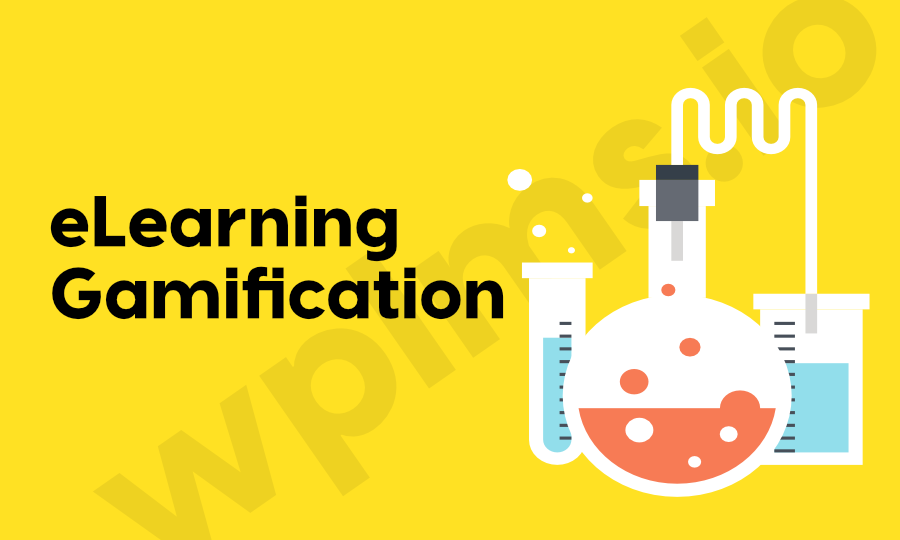
Gamification in eLearning is not a new concept. It means incorporating game elements into eLearning. Elements like scores, points, rules, badges and clans greatly enhance the learning experience of a user.
Elements in Gamification
However implementing gamification into courses can be a challenging task. Sometimes the subject of the course itself seems like it can not involve any gaming elements but it is left Following important factors should be considered for implementing gamification in your courses :
- The challenge: Every gamification element involves a challenge. A challenge can be a question or a quiz or an activity. The challenge must have a scoring element in it.
- Success message: On successful completion of the challenge the user should get a clear visual message, like a big message or fireworks etc. It should signify a sense of achievement.
- Re-attempts on Failure: With every challenge, there is an element of disappointment on failure but just like games we want to give the user another chance to reattempt the challenge.
- Social sharing: Option to share their achievement with the social world. This is free publicity and gaming apps make the best out of it.
- Leaderboards: Leaderboards on how users stack with their friends bringing in a sense of competition among peers greatly enhances user engagement.
- Recognition: The achievements should be recognized like a “wall of fame” or a Tweet about an achievement by a user or showcase on the facebook page. If possible a verifiable element can be added so that the user is able to use the achievement for professional reasons. Like if you’re giving out a certificate for achievement as recognition then it can have a verifiable certificate code or a QR code.
Benefits of Gamification
Gamification improves user engagement. If it is not working for your courses or eLearning content then most likely you’re doing it wrong. The implementation of gamification should convert into something real, something that really benefits the user. Implementing gamification for the sake of gamification is just wrong. You should think what is the real benefit user’s will get from it and instead of giving out the real benefit straight away like a lucky draw, involve your users in a gamification experience. There are several benefits associated with gamification :
- User Engagement: It means that users want to stay connected with your site. Studies have shown an increase of 89% in user engagement.
- Improves Retention: When you learn things in a game, you retain it for a longer duration. Studies have shown a 9% increase in retention.
- Motivates Learners: Rewarding users motivates them. Studies show a 60% increase in learner motivation.
- Improves learner skill: The skills learned in gamified eLearning are grasped easily. Studies show an increase of 14% in user knowledge and skill.
- Improves productivity: Learning through gamification improves learner productivity, they’re able to better understand and retain topics for a longer time which improves their productivity. Studies show a 70% increase in learner productivity.
How to plan Gamification ?
Gamification in eLearning needs to be done correctly because some studies even real the hard facts when gamification is not implemented correctly. Think of it as playing a game. Every user has certain level, a game which does not provide enough challenge can quickly lose interest from users who are fast learners while on the other hand a game which is very hard can lose the motivation from the user who can not proceed and just give up. The important point for user motivation on how you’re planning the gamification experience is the end reward the user is going to get because it is the first attraction for the user, the gamification experience comes later on.
Although this section is subjective because it really depends on your the content on how you should plan the gamification experience. Lets look at some of the examples of sites and apps pioneering this concept. Feel free to add in below comments.
Gamification examples :
Khan academy
Khan academy one of the most popular MOOC sites uses Badges, Points and Goals for gamification. There are 6 category of badges. The category names are interestingly matched to celestial objects like Meteorite, Moon, Earth, Sun, Black hole and Challenge badges. Each batch is awarded at a trigger point like successfully answering quiz questions.

In between of a course, when you earn a badge, it pauses and shows you the points earned and the badges that you earned.

Coursera
Coursera another popular MOOC platform which hosts courses from Universities and colleges uses Certificates as their rewarding criteria. You also get the option to showcase the certificate in your Linkedin profile which is recognition for the gamification reward.

Duolingo
Duolingo is one of my personal favorite apps for gamification. It is a card based app for learning languages and it uses badges for gamification experience. It effectively uses almost all of the gamification points and is the most successfull app based e-learning project.

Samsung
Samsung a big corporate uses gamification in its eLearning project Samsung Nation by using Badges.

How to use Gamification for increasng sales?
The only way Gamification can increase sales is when the Gamification experience itself becomes involving that users want to participate only to play the game. In all above examples, I found Khan academy having the most incredible gaming experience in eLearning. Badges and points being the most popular method for involving gamification experience in eLearning. Following points can definitely help increase sales of your online courses :
- Enable both point based rewards and Badges for your eLearning site. The points show the progress and Badge is the end reward.
- The points and badges should follow a theme, like khan academy uses celestial objects, you can use mountain ranges or river names or anything. Since it is gamification it should be clear/unambiguous (eg : sun is bigger than earth so Sun badge takes more points than earth badge) and it should sound fun. Like khan academy has a badge named “Virus”, “Mad Scientist”, “Da Vinci” and a legendary “Tesla” badge.
- The images used in Badges have an incredible effect. The Badge image should look professional that user would want to share it on social media. A nice name and theme to the badge also adds on to the effect.
- The rewards should be sharable and verifiable. A direct link to the certificate or badge adds on to the credibility.
- The reward can resolve into something real, like earning a badge can result in getting the next course free or a certificate which user can showcase on his resume.
- Add an on-boarding experience, a user on its first session should get a proper introduction on how the gamification works and it should create a sense of excitement and fun just like when you play a game. The first challenges need to be extremely easy because the user is learning the gamification. Remember our objective to introduce gamification is user engagement, since users who join the first have maximum probability of leaving the site, the gamification should start from the very first step.
- Add a multiple Learning paths experience for the reward like Lynda.com. That is a user should be able to attempt at the badge from various levels Since gamification run the risk of losing interest if the process is hard, either the gamification content should adopt itself based on user level ( Check out game Angry birds 2, you and you friend see different hurdle for the same level)
In WPLMS we support both point based, Badge based and Learning Path gamification experiences.
All in
references to studies from where facts are taken :
